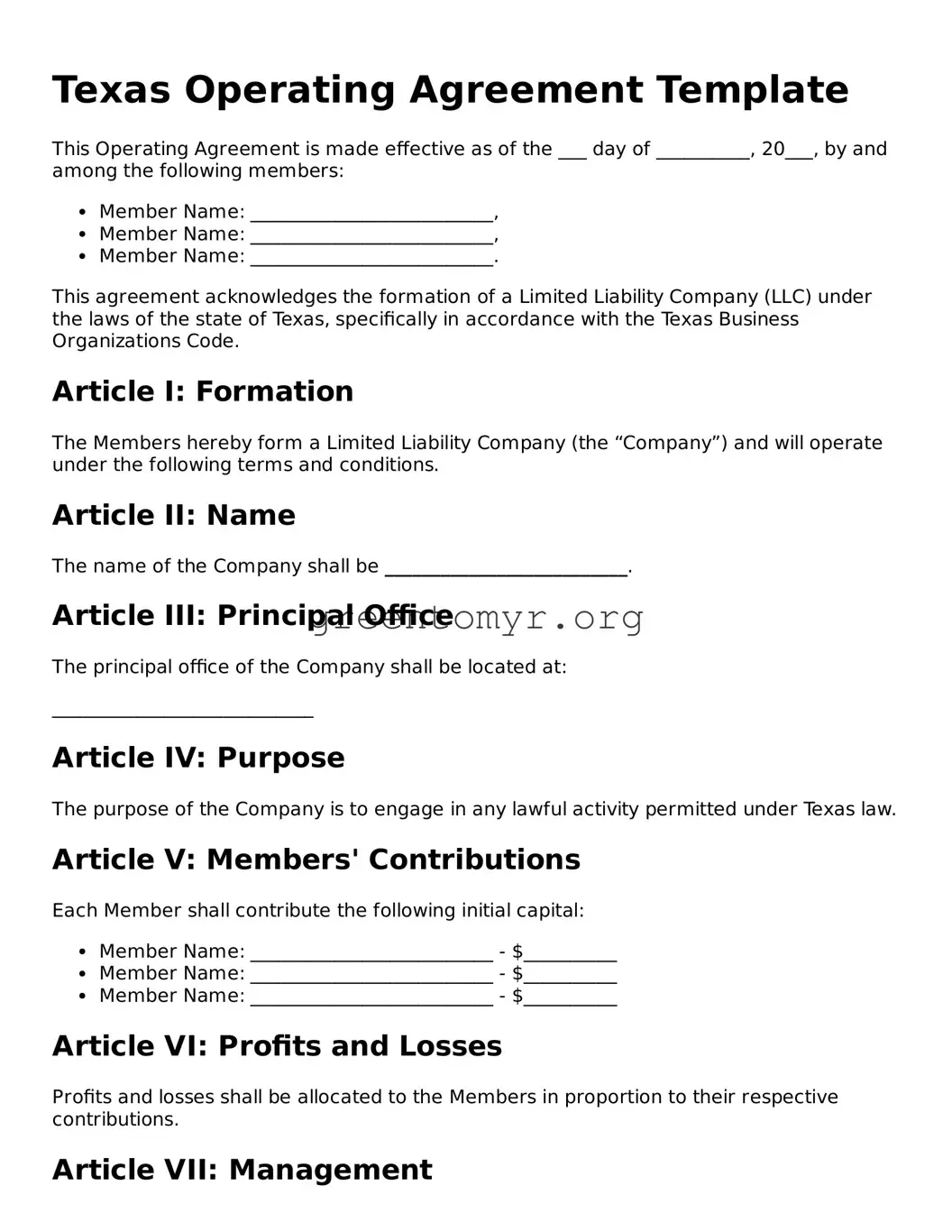Texas Operating Agreement Template
This Operating Agreement is made effective as of the ___ day of __________, 20___, by and among the following members:
- Member Name: __________________________,
- Member Name: __________________________,
- Member Name: __________________________.
This agreement acknowledges the formation of a Limited Liability Company (LLC) under the laws of the state of Texas, specifically in accordance with the Texas Business Organizations Code.
Article I: Formation
The Members hereby form a Limited Liability Company (the “Company”) and will operate under the following terms and conditions.
Article II: Name
The name of the Company shall be __________________________.
Article III: Principal Office
The principal office of the Company shall be located at:
____________________________
Article IV: Purpose
The purpose of the Company is to engage in any lawful activity permitted under Texas law.
Article V: Members' Contributions
Each Member shall contribute the following initial capital:
- Member Name: __________________________ - $__________
- Member Name: __________________________ - $__________
- Member Name: __________________________ - $__________
Article VI: Profits and Losses
Profits and losses shall be allocated to the Members in proportion to their respective contributions.
Article VII: Management
The Company is managed by its Members. Decisions shall require a majority vote unless otherwise specified.
Article VIII: Meetings
- Regular meetings shall occur at least annually.
- Special meetings may be called by any Member.
- Notice of meetings must be provided at least ____ days in advance.
Article IX: Indemnification
The Company shall indemnify Members against any losses incurred due to the Company’s activities, provided the Members acted in good faith.
Article X: Amendments
This Operating Agreement may be amended only by a written agreement signed by all Members.
Signatures
By signing below, the Members agree to the terms of this Operating Agreement:
__________________________ (Member Signature)
Date: ________________________
__________________________ (Member Signature)
Date: ________________________
__________________________ (Member Signature)
Date: ________________________
